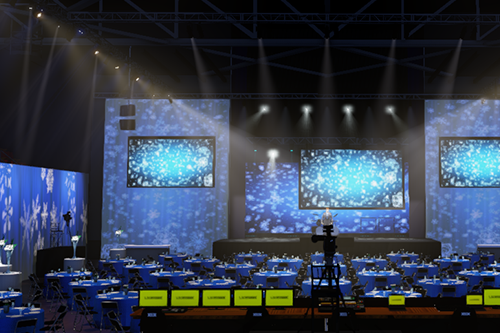Selecting the Ideal Dot Pitch for Maximum LED Display Efficiency
Selecting the Ideal Dot Pitch for Maximum LED Display Efficiency
Blog Article

When it pertains to LED walls, a key most elements to take into account is pixel pitch. Pixel pitch is defined as the distance between the centers of two neighboring pixels on an LED display. This measurement is commonly expressed in millimeters. Understanding pixel pitch is essential because it explicitly affects the clarity and definition of the images displayed. A smaller pixel pitch indicates that the pixels are nearer together, leading to a greater resolution, while a bigger pixel pitch results in a lower resolution. Thus, selecting the appropriate pixel pitch is essential for achieving peak LED wall functionality.
The selection of pixel pitch often depends on the viewing distance. For instance, if the light-emitting diode wall is intended to be seen from a further away, a larger pixel pitch may be suitable. This is due to the fact that the human eye cannot readily discern individual pixels when they are farther away. On the contrary hand, if the wall will be observed up nearby, a smaller pixel pitch is necessary. In situations such as inside events, where viewers are typically nearer to the screen, a reduced pixel pitch will offer a sharper and clearer image. Hence, understanding how sight distance affects pixel pitch is critical to making an informed choice.
Another crucial factor is the planned use of the light-emitting diode wall. Different applications, such as advertising, concerts, or conference presentations, may led wall video wall solutions require varied pixel pitches. For example, an LED wall used for advertising in a shopping mall may gain from a pixel pitch that facilitates lively colors and high detail so that it grabs the focus of bystander shoppers. Conversely, an outdoor LED wall used at a concert may prioritize brightness and visibility over resolution, permitting for a bigger pixel pitch. Thus, the particular context in which an LED wall will be used is crucial for establishing the appropriate pixel pitch.
Pricing is also a significant factor when selecting pixel pitch. Generally, LED displays with reduced pixel pitches often to be more costly due to the higher density of pixels and the advanced technology required for production. Although it may be tempting to opt for a high-resolution display with a small pixel pitch, budget constraints often require a balance between quality and cost. Businesses should assess their needs and determine how much they are willing to invest in an light-emitting diode wall, ensuring that the pixel pitch matches with their budgetary capabilities while still meeting performance expectations.
Finally, it is crucial to take into account the maintenance and durability of the LED wall when choosing pixel pitch. Displays with smaller pixel pitches can sometimes be more delicate and may need more meticulous handling and maintenance. Regular upkeep is necessary to ensure that the display functions effectively over time. Knowing the maintenance requirements and potential challenges associated with varied pixel pitches can assist organizations make a more knowledgeable decision. By considering all these elements, including sight distance, intended use, cost, and maintenance, individuals can select the ideal pixel pitch for peak LED wall functionality.